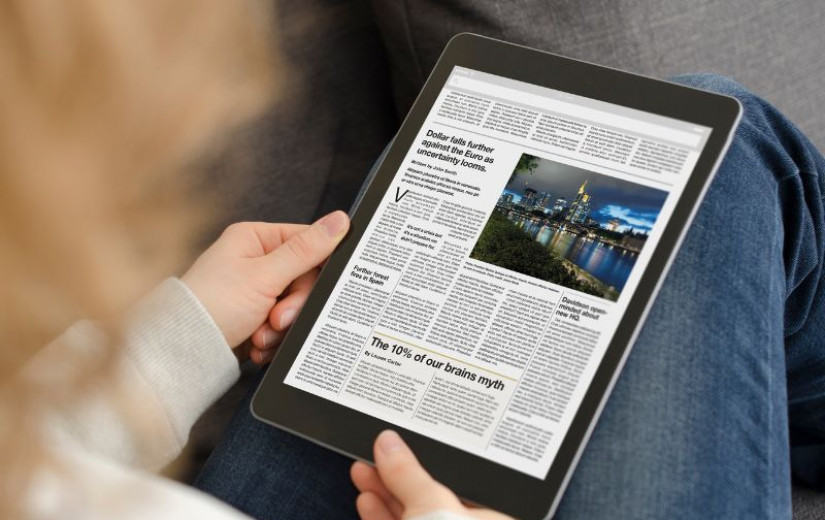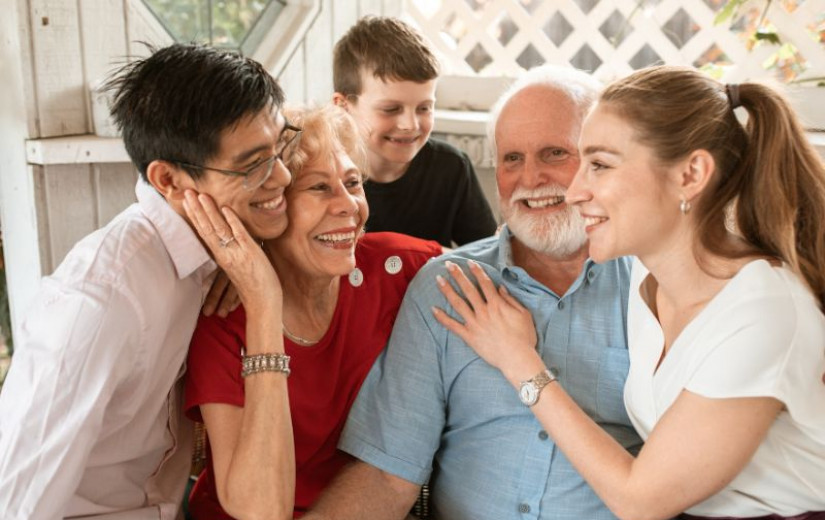

It took Art Basel announcing a new edition in Doha, Qatar, and Sotheby’s recently previewing its first auction in Abu Dhabi at the St. Regis Saadiyat Island for the art world to start paying closer attention to the Gulf art scene and its potential. But while the U.A.E.’s art ecosystem—which includes Dubai’s gallery network and institutional hubs like Sharjah—has long been discussed, far less has been reported about the expanding art scene in neighboring Saudi Arabia.
Last February, in the UNESCO-protected historical city of Diriyah, just outside the capital Riyadh, Sotheby’s held its first-ever auction in Saudi Arabia. The cross-category sale featured works by Fernando Botero and Refik Anadol alongside jewels, watches, rare cars, handbags and iconic sports memorabilia, totaling $17.28 million. This was not Sotheby’s first incursion into the Kingdom. The auction house had already staged several charity sales, backed Saudi Arabia’s first Contemporary Art Biennale in 2022, supported last year’s inaugural Islamic Arts Biennale in Jeddah, and partnered with the Diriyah Biennale Foundation on the public program for its 2024 edition. Since 2020, the land-art biennial Desert X, conceived in California, has staged a Saudi edition in AlUla, with the next installment scheduled for January 2026—timed so visitors traveling to Art Basel Doha can continue on to Saudi Arabia.
Still, little is known about the day-to-day infrastructure behind these initiatives or the players shaping Saudi Arabia’s contemporary art scene. Observer recently spoke with Mohammed Hafiz, cofounder with Hamza Serafi of ATHR, the Kingdom’s leading contemporary art gallery, to learn more about the current state of the art scene and its evolution, particularly under Crown Prince Mohammed bin Salman’s Vision 2030. Since its launch in 2016, the strategic framework has opened the Kingdom to the world and positioned culture as a central force of transformation.
ATHR opened in 2009—well before Vision 2030 created the space to give art and culture a proper boost as the country transitions from an oil-centric economy to a global hub—and now has locations in Riyadh, Jeddah and AlUla. “We started the gallery at a time when the local art scene—and the broader cultural movement around it—was still quite slow,” says Mohammed Hafiz, noting that Saudi Arabia in the 1940s and 1950s had a vibrant artistic movement, with some of the country’s pioneering modernists emerging during that time. In 1958, the Ministry of Knowledge (then the education authority) inaugurated Saudi Arabia’s first formal art exhibition, a symbolic milestone that brought fine art into national consciousness. “For various reasons, that momentum faded over the decades, but when we opened, we wanted to help reignite that energy.”

ATHR’s beginnings were intertwined with “Edge of Arabia,” a traveling exhibition of Saudi contemporary artists that launched in London and toured across Europe and the Middle East. The project became one of the key catalysts for bringing international attention to Saudi contemporary art. The 2008 London exhibition alone drew more than 13,000 visitors before traveling to Venice during the Biennale the following year, and later to Berlin, Istanbul and Dubai.
Afterward, somewhere in 2013, Hafiz expanded the gallery’s work and launched a social initiative called 21,39. “The goal was to produce one major curated exhibition each year and build a whole week of programming around it—panels, talks and events that would bring together local curators, museum directors, collectors, patrons and artists, local and international,” Hafiz explains. The initiative had both private and public components, led by Her Royal Highness Princess Jawaher and a group of patrons, with Hafiz serving as vice chair throughout its run. “It became another important building block in the evolution of Saudi Arabia’s contemporary art ecosystem.”
Vision 2030 marked a watershed moment: under its framework, the Kingdom elevated “culture and arts” as vital pillars of national transformation—no longer ornaments, but key drivers of tourism, soft power, identity and economic growth. “The leadership and the government recognized the importance of culture and the creative industries, not just as forms of expression but as engines of national development,” Hafiz says. As part of that shift, the Ministry of Culture was finally established as a standalone entity—previously it had been folded into the Ministry of Media.
As part of Vision 2030, the Ministry of Culture developed its own strategy, set priorities, and built a network of specialized commissions: the Art Commission, the Culinary Commission, the Museum Commission and others—sixteen in total—each focused on a distinct cultural sector. “This has given us as operators in the art scene many opportunities,” says Hafiz. “It has allowed us to support our artists more effectively, to exhibit their work to a broader local audience, and to engage with an entire new generation of collectors increasingly engaging with contemporary art in Saudi Arabia.”
The Ministry of Culture has become a pivotal force, spearheading initiatives like the Biennale, the Desert X exhibitions, and other major commissions that have transformed the Kingdom’s artistic landscape. These large-scale projects have given artists the chance to realize some of their most ambitious visions and have positioned them at the forefront of Saudi Arabia’s rapidly evolving cultural scene, as Hafiz notes.

This rapid evolution underscores the promising trajectory of the Saudi art scene. At the same time, it highlights how ATHR has long operated less as a conventional gallery and more as a cultural platform—a space dedicated to producing and supporting art and culture within the Kingdom while promoting their international reach. “From the start, it was never just about commercial representation. Our space has always operated more like a cultural hub,” Hafiz asserts. “What truly defines us is how we work with artists and engage with the broader artistic community.”
Today, ATHR spans roughly 4,000 square meters across its original venue in Jeddah, its newly opened Riyadh location (ATHR JAX) and a smaller outpost in AlUla—the first contemporary art gallery in the historic city. It has also expanded to include the ATHR Foundation, which focuses on developing emerging artists and alternative art spaces.
Hafiz was a patron and collector before becoming a gallerist. He describes his deep involvement in fostering Saudi Arabia’s art scene as a natural convergence of influences. Though his family wasn’t directly involved in art, they were active in creative industries—fashion retail on one side and publishing on the other. “There was always this dual engagement: the creativity of fashion and the amplification of voices that comes with journalism,” he reflects. “When I encountered art, I realized it merged both worlds—it had the storytelling power of journalism and the expressive creativity of fashion. It was a language that transcended cultures and touched people in a unique way.”
Hafiz began collecting art around 2007, after selling his family business. Soon after, he felt compelled to invest in his country’s cultural potential. “Suddenly, I had the time and resources to explore something new. I thought, why not give this a try—why not build something that could help artists and create a cultural movement? That’s how it all began.”
Cultivating an emerging art scene
ATHR’s diversified ventures now include AKTHR, an art services agency that supports Saudi Arabia’s broader art industry. Drawing on nearly two decades of experience, the team advises and assists a growing community of individuals eager to engage with art and begin collecting.
During the inaugural edition of the Islamic Biennale, ATHR hosted a major rooftop dinner to open their exhibition, welcoming around 2,000 guests—85 percent of them local. What stood out most was the sheer number of young attendees. “The collector base isn’t huge yet, but there’s definitely an appetite—an eagerness to experience, to see, to explore,” Hafiz confirms. “It’s incredibly refreshing to witness.”

ATHR is also investing directly in education and collector development through initiatives like Young Art Collectors. “Through it, we organize talks with established collectors, guide new ones and take them on trips to art fairs and studios,” he explains. “It’s really about helping them develop their knowledge—understanding why they might want to collect, what their vision is and how to engage meaningfully with art.”
One of the country’s most significant recent developments has been in education. Just last week, the Minister of Culture announced a major investment in a new arts and cultural university set to open in Riyadh within the next two or three years. The university is already forming partnerships and affiliations with international institutions across art, music, theater and other creative disciplines.
Hafiz notes that while art programs have previously existed within Saudi universities, there has never been a dedicated art university in the country. “This will be the first institution fully devoted to the creative industries, and that’s a significant milestone.” Meanwhile, the Ministry of Culture has also launched a generous scholarship program for Saudis who wish to study art abroad. Once accepted into a pre-approved university, students receive full tuition and living expenses for both undergraduate and postgraduate studies. “It’s a major and truly inspiring initiative.”
At the same time, Hafiz remains focused on cultivating dialogue. “One of our key objectives is building connections and bridges between Saudi Arabia and the rest of the world,” he says. ATHR supports that mission through its residency program, which invites curators, institutional representatives and museum directors to spend time in Saudi Arabia for exploration and study trips. “It’s about creating genuine exchange, fostering understanding, and building lasting relationships that strengthen the dialogue between Saudi Arabia and the global art community.”

Championing a new wave of Saudi talent
Saudi Arabia today can also claim a new generation of emerging artists, many of whom ATHR is actively promoting on the international stage. In terms of themes defining contemporary Saudi art, Hafiz points to two recurring subjects: religion and society. “Religion remains an integral part of our identity, so artists often reflect on it—sometimes by commenting on the past and its challenges, and sometimes by envisioning the future and its possibilities,” he explains. “Then, there’s the social dimension, especially around women’s rights. Many female artists are exploring questions related to gender, representation and the transformations we’re experiencing today.” Notably, much of this work carries an optimistic tone—acknowledging progress, engaging thoughtfully with the country’s ongoing social shifts and reflecting a shared hope for the kind of future that Vision 2030 is shaping.
From there, the conversation naturally turned to censorship and artistic freedom, as the country continues to face international criticism over its suppression of free speech—including death sentences—and the systemic exploitation of migrant laborers. Some critics argue that the official promotion of art functions as a “cultural façade” strategy: amplifying an image of openness and modernization while maintaining tight control over which narratives are permitted.
Hafiz acknowledges that censorship is a complex issue, noting that what may be considered sensitive or unacceptable in the West may not be in Saudi Arabia—and vice versa. “Every society has its own parameters,” and what is deemed permissible or taboo is shaped by local religious, social and cultural frameworks, which often differ from Western norms. “What I find encouraging is that Saudi artists have become very mature and intelligent in how they approach complex subjects,” Hafiz adds, pointing to the growing use of symbolic, metaphorical, and conceptual strategies. By embracing ambiguity, layering and coded imagery, Saudi artists invite multiple interpretations while making their work more resilient to censorship. “They know how to address issues creatively—how to make a point, leave room for interpretation, and allow the audience to engage with the work—while still remaining respectful of local culture and values.”
ATHR will soon bring Saudi artists to the forefront of the international scene, with booths at both Frieze London and Art Basel Paris this October. Each presentation will focus on Saudi female artists and challenge lingering stereotypes about the Kingdom—especially those tied to female oppression—while highlighting its evolution and future ambitions.
ATHR, in fact, does not treat art fairs as purely commercial platforms but as arenas for dialogue, exchange and shifting perspectives, as Hafiz clarifies. “Of course, when sales happen, that’s great—we love that—but the real goal is to create a long-lasting impact. We’re here for the long haul,” he says. “We don’t want to appear for two or three years and then disappear. We want to build trust, connection, and respect—staying consistent with our values and strategy, returning every year and building on what we’ve started. So far, that approach has worked well for us.”
At the same time, Hafiz points to a growing international appetite for Saudi artists. “We’ve always had international collectors acquiring works from us and following our artists,” he says, noting that while Saudi artists may not yet be fully mainstream, many have begun gaining global visibility.

This recognition extends well beyond ATHR’s roster. “If you look across the scene, you’ll find Saudi artists represented by major international galleries—Maha Malluh with Krinzinger Gallery, Mohammed AlFaraj with Athr and CAMEL, Ahmed Mater with Galleria Continua, Arwa Al Neami with Sabrina Amrani in Madrid and Dana Awartani with Lisson Gallery. These artists are already positioned within international gallery rosters that don’t look at geography as a limitation, and that’s a really encouraging sign for the future.” Hafiz also mentions names such as Mohammed Al-Sanea, Dana Awartani, and Manal Al-Dowayan, all of whom have exhibited in museums abroad and are widely collected internationally.
At Frieze London, the gallery is presenting a two-artist booth featuring Daniah Alsaleh and Basmah Felemban, both exploring Saudi Arabia’s natural and cultural landscapes as sites in flux—continuously reshaped by the movement of people, ecologies and stories. Drawing on her research in the ancient Nabataean city of AlUla, Alsaleh incorporates mineral fragments to build a layered chronology and geology, weaving natural and human histories through material and memory. While Alsaleh looks to the past and the country’s heritage, Felemban looks forward—reimagining the landscape as an informational system. Her futuristic approach envisions new terrains and proposes multimedia, multidisciplinary ways of navigating the environment through fragments of language and data.
The following week, at Paris’s Grand Palais, ATHR will return to Art Basel with a three-artist, female-led presentation featuring Sarah Abu Abdallah, Hayfa Algwaiz and Lulua Alyahya. Through distinct styles—ranging from suspended, symbolic compositions to conceptual reflections—these artists explore how images can mirror and translate the complex, layered experiences of Saudi women today. Approaching these perspectives from sociopolitical, anthropological, and emotional angles, their work challenges stereotypes and prejudices while offering international audiences a rare glimpse into Saudi Arabia’s evolving contemporary art landscape—studio-based, globally networked and deeply rooted in local nuance and culture.

Challenges and opportunities
Despite its many promising elements, Saudi Arabia’s art ecosystem remains in a formative stage and continues to face several key challenges. One of the most pressing is the limited number of galleries operating at ATHR’s level, as well as the lack of other spaces capable of supporting both emerging artistic talent and an expanding audience for contemporary art.
Still, Hafiz notes that the traditional concept of a gallery is itself under scrutiny. “Artists today can sell directly through online platforms—straight from their studios, through Artsy, or other direct-to-collector channels,” he explains. “In that kind of environment, the traditional role of the gallery—as a representative who works closely with artists to develop their careers, secure institutional participation, and place works in collections—becomes harder to sustain.” A few new galleries have opened in recent years, which Hafiz sees as a positive development, but he emphasizes that the collector base still needs time and effort to mature.
At the same time, Hafiz sees plenty of opportunity. Because Saudi Arabia’s art scene is still taking shape, there is room to experiment with new models—approaches that don’t rely on inherited frameworks. “We’re living in a time when every concept of museum or gallery is in question,” he says. “When you have a legacy, it’s very difficult and challenging to change the way you’ve been doing things. But when you build something new with a contemporary concept and a forward-looking strategy, you’re not held back by that weight—and that gives Saudi Arabia so much potential.”
It may take time to build, but once the foundation is solid, momentum can accelerate quickly—especially in a region where Saudi Arabia, the U.A.E. and Qatar are all deeply invested in the arts. Each serves as a major patron, moving in concert to elevate and strengthen the regional art scene and help position it as a new global hub. Hafiz describes Dubai, Abu Dhabi, Doha and Saudi Arabia as complementary forces. “We’re all supporting each other and working together to build a complete ecosystem. It’s like Europe or the U.S.—you have art fairs and museums spread across different cities. That diversity is healthy. The more activity there is, the better for everyone.”

More Arts interviews
-
Taymour Grahne’s Trajectory Shows How a New Generation of Dealers Is Thinking Globally
-
Five Decades On, Hal Bromm Reflects On His Gallery’s History and His Own Legacy
-
Roshini Vadehra Charts India’s Growing Role in the Global Art Market
-
‘Made in LA’ Captures the Creative Resilience of the Los Angeles Art Scene in a Charged Moment
-
Curator Karen Comer Lowe’s Five Artists to Watch









